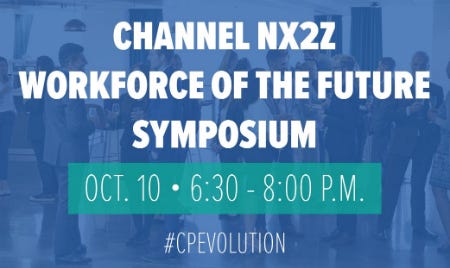4 Generations Are in the Workplace. Here Are 3 Ways to Adapt
Here comes the App Generation, which is having none of that desk phone. Are you ready for the four-generation workplace?
September 12, 2018


Chris Doggett
By Chris Doggett, Chief Sales Officer, Fuze
Millennials and their Gen Z successors, which we call the “App Generation,” have high expectations when it comes to technology.
A survey done by Penn Schoen Berland found that 42 percent of millennials would leave an organization due to “substandard technology.” And while boomer and Gen X employees aren’t exactly yelling “get off our lawns” as some pundits accuse, they’re often understandably attached to existing hardware and software stacks that are embedded in the workflows that keep the business running.
The result is, you and your customers are being forced to rethink the status quo, but not too drastically. How will you accommodate tech-driven employees who value efficiency, flexibility and personal growth without disrupting the business or putting data at risk? Here are three suggestions.
1. Provide Consumer-Like User Experiences
Millennials grew up with technology at their fingertips and are accustomed to a certain user experience. There’s art and science to designing an elegant, modern UI. The App Generation won’t abide outdated, clunky, poorly designed systems and tools. If you don’t make sure the technology they have at work is as intuitive and convenient as what they use in their personal lives, they’ll abandon that expensive enterprise software suite. In some cases, they’ll bring in free consumer software options, such as for instant messaging, or download free video software when they’re looking for face time between colleagues. Not only does this create a disjointed experience across the organization, it creates serious data security and shadow IT issues.
The bottom line is, people will always look for ways to make their workflows faster and smoother. As Shan Sinha notes in a recent ComputerWorld piece, “a great user experience is no longer the cherry on top of a secure product; it’s the whole sundae.” Millennials won’t wait to get the right technology at their fingertips, so think differently about the tools you and your customers are providing, and make user experience a top priority.
2. Create Opportunity for Customization: In today’s office environments, no two workflows are the same. While millennials have shaken things up in modern workplaces, there’s a larger generational challenge at hand. Companies today are dealing with four generations in the workforce –– each with preferred channels of communications. Instant messaging, a phone call, email, videoconferencing, or the good old-fashioned taking a walk over to a colleague’s desk are all in play.

Customization has become paramount to productivity. Customer IT leaders will never get all employees to agree on desktops versus laptops or landlines versus cell phones, so it’s time for you to help let them choose. Enable people to work smarter by giving them flexible technology that is situated to support collaboration, from the baby-boomer manager to the Gen Z intern.
3. Bring Flexibility to the Forefront: Work is no longer a place we go from 9 to 5, rather something we do. A recent survey by my company, Fuze, found that people desperately want …
… flexibility: Eighty-nine percent say it should be the norm, not a selective “perk.”
Fortunately, in recent years, organizations have started to adapt to this desire for flexibility — more than two-thirds of people today work away from the traditional office at least once a week (CNBC).
Enabling flexible work; however, is possible only if people have the technology to stay connected with their colleagues and the organization as a whole, regardless of physical location. With this in mind, partners need to work with CIOs and IT leaders to put flexibility at the forefront of their technology decisions, thinking less about equipping an office with the right tools, but rather equipping people with tools that work where and when they want and are most productive. Cloud is in, and there’s a reason that, by 2020, more than 80 percent of software vendors will change their business models from traditional license and maintenance to subscription, according to Gartner. That’s also great news for partners.
According to Pew Research, millennials are the largest generation in today’s workforce. Contrary to what many believe, they haven’t reshaped traditional work ethics, and they’re not “a problem” or “difficult to manage.” But they have driven business leaders to rethink what’s always been done and embrace new norms when it comes to flexibility, productivity and work/life balance. As a trusted adviser, it’s time to walk into customer sites with recommendations on how to build a multi-generational set of technologies that will let everyone be productive, secure and happy to go to work, wherever they may be.
As chief sales officer, Chris Doggett is responsible for leading and managing Fuze’s global sales organization to achieve the company’s bookings and revenue goals. Chris brings more than 15 years of experience in sales and marketing, extensive knowledge of best practices in the development and management of channel partnerships, and strong general management experience. Prior to Fuze, Chris was SVP of global sales at Carbonite, where he was responsible for achieving the company’s revenue goals and the productivity of Carbonite’s sales and revenue marketing functions.
Read more about:
AgentsYou May Also Like
